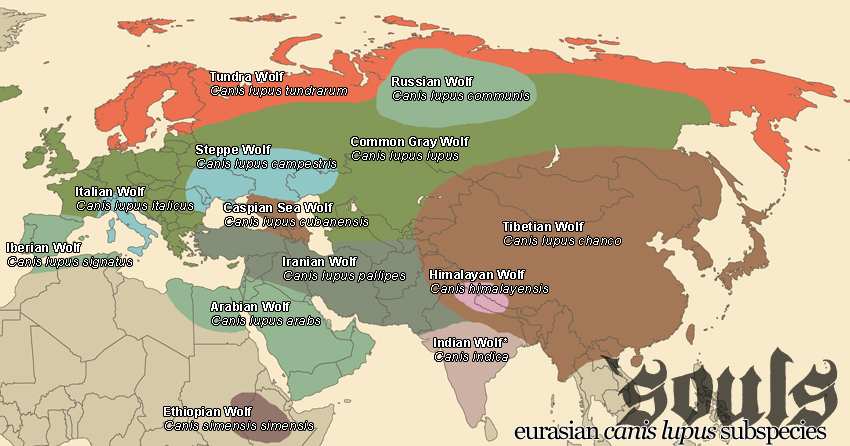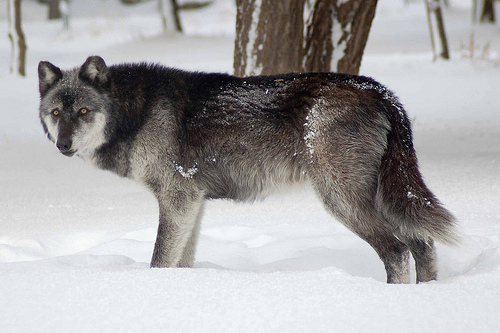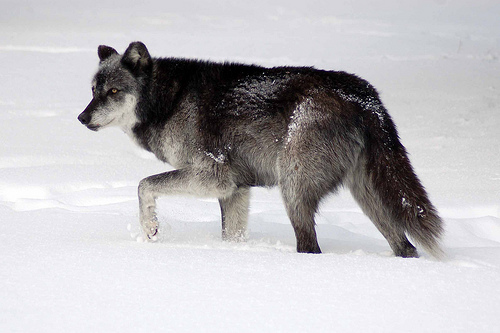Tundra Wolf (''Canis lupus albus'')
See our RP Guide for more extensive information regarding wolves.
On this page... (hide)
- 1. Common Names
- 2. 'Souls Range
- 3. Appearance
- 4. Other Characteristics
- 4.1 Reproduction & Social Life
- 4.2 Diet
- 4.3 Survival
- 5. Citations
1. Common Names
Tundra Wolf, Turukhan Wolf, Arctic Wolf, White Wolf
2. 'Souls Range
Northern Europe and Asia, heavily concentrated in Russia.
3. Appearance
9 year old Canis lupus albus, from wildspiritwolfsanctuary@Flickr
The Tundra Wolf is one of the largest Eurasian examples of a gray wolf. They can attain a body length of 7 feet (2 meters) and an average weight of 100 - 125 pounds (45 - 57 kilograms). Although the Tundra Wolf is often supposed to attain greater sizes than the Common Gray Wolf, this is untrue, as the Russian Wolf generally attains greater weight and the Tundra Wolf is built just a little more lightly.
The fur is very long, dense, fluffy and soft. The Tundra Wolf's coloration is is usually very light and grey in color. The lower fur is lead-gray and the upper fur is warm grey. Most tundra wolves have a grey color, with mixes of black, rust and silver gray.”1 Its fur and size is so similar to that of large Mackenzie Valley Wolves of the North American subspecies.
4. Other Characteristics
4.1 Reproduction & Social Life
“Due to the high latitude of their environment (71°), they tend to breed much later in the year than most other wolves,usually in late March through April.”2 The tundra wolf dens in river valleys and thickets in dry plateaus, and tends to form small packs containing 5 to 7 members. The Tundra Wolf, unlike many other subspecies of gray wolf, rarely forms permanent territories, traveling 125 - 186 miles (200 - 300 km) annually in order to accompany reindeer migrations.
4.2 Diet
It feeds primarily on wild and domestic reindeer and snow sheep in their eastern range. Their reliance on the wild reindeer keep it nomadic, as the Tundra Wolf must follow the herds in order to eat. This wolf subspecies will also preys on hares and arctic foxes.
4.3 Survival
The Tundra wolf was not a scarce or uncommon canine prior to the extinction of humanity; they flourished directly after 1988, and upon picking up Luperci traits and humanized lifestyles, became even more advanced. There are feral canines among these populations, but non-Luperci are extremely rare.
5. Citations



